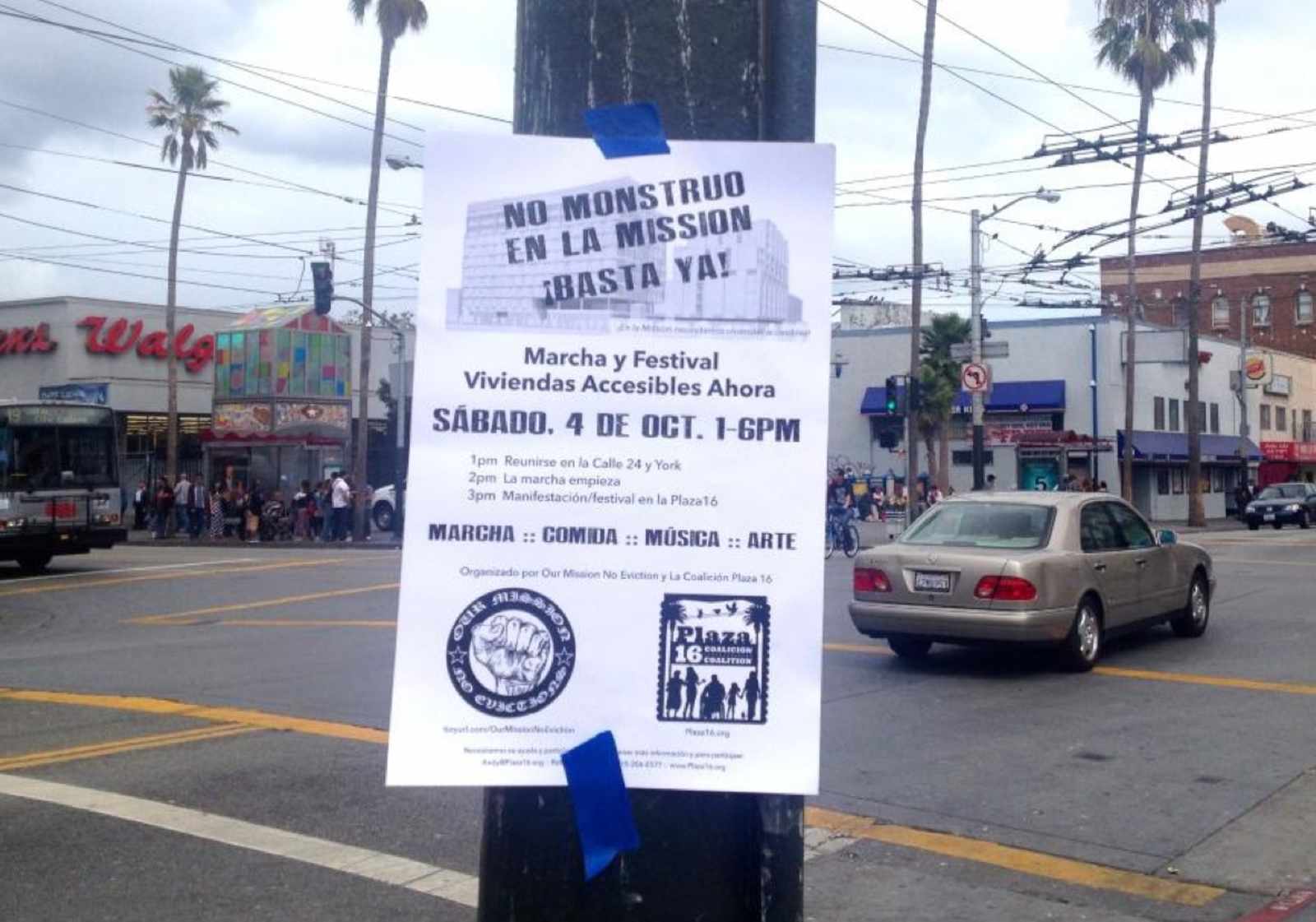San Francisco's Housing Protests Aren't About Hating Tech, No Matter How Much Industry Yes-Men Wish They Were
— By Kevin Montgomery (@kevinmonty) |

The proposed luxury apartment complex at 16th and Mission is one of the most controversial developments to hit the neighborhood in recent years. Activists have labeled it a “monster in the Mission,” fearing its imposing size will usher in a brutal wave of gentrification along Mission Street. The politics behind the protests are complicated, but you’d never know that reading the Examiner.
Over the weekend, San Francisco’s second fiddle daily published a story that ignorantly insisted Mission residents are rising up against the project out of misplaced hatred of techies:
The “monster” is a 10-story housing complex of 350 units proposed above the 16th and Mission BART station — a dream for transit-first advocates. It would be new housing that won’t displace anyone other than customers of a Burger King.
The opposition calls the market-rate development a “monster” because it will attract more tech workers to the Mission. It doesn’t matter that a percentage of the units will be below market rate. The protesters are willing to kill new affordable housing simply because they dislike tech workers.
This is willfully misleading. We don’t disagree that many in the Mission dislike tech workers. But pretending that tech loathing is driving housing activism transcends simple cluelessness.
Ever since the $175 million project was unveiled last October, residents have been quick to outline the real reasons behind their opposition.
The primary concern is that the complex will set an unwelcome precedent. The building will be a glistening harbinger, signaling to developers and landlords that Mission Street is the new Valencia. Many fear the area surrounding the 16th and Mission BART plaza—home to one of the largest clusters of low-income housing and SROs in the city—will be suddenly hit with rising rents and evictions. Those rent increases could impact residents and businesses alike, with worries that local businesses that serve both the Latino and lower-income communities could be pushed off the corridor.
Then there’s the concern that the residents of the new complex, which has projected rents between $3,500 to $5,000 per month, will demand increased enforcement of “quality of life” crimes. And the enforcement of those laws predominately affect the poor, as we’ve already begun to witness in the wake of the real estate-backed “Clean Up the Plaza” astroturf campaign.
While the tech industry may help fuel San Francisco’s gentrification crisis, they are hardly the only force behind it. We know it. Activists know it. The Plaza 16 Coalition, which leads the “No Monster in the Mission” protests, knows it (their “Visions/Demands” page doesn’t even mention the word “tech”). Even the Examiner knows it.
That’s right. An article published just three months ago by the paper accurately summed up the concerns of neighborhood activists:
While the project would demolish only some buildings on the site and not displace any residents, numerous community groups have opposed it because they say it will fundamentally change the neighborhood.
Andy Blue, an organizer with the 16 Plaza Coalition, which was formed to oppose what it has dubbed “The Monster in the Mission,” said there is no question that such a development will be a game-changer for the working-class Latino neighborhood.
So why’d the paper switch up the narrative and make it about techie victimization? The column itself hints at the motivation behind the change:
Doesn’t anyone see how these new units will provide a safety valve to prevent displacement? With 350 people living above the 16th Street BART station, there are 350 people not competing for existing housing in the Mission. […]
If we squander this opportunity to build much-needed housing on a rapid transit corridor connecting San Francisco to the Bay Area, grandma’s words will surely haunt us when we look in the mirror. Because the only monster we’ll see is our own disfigured face.
Naturally, the conservative-leaning paper’s stance is pro-development. And the crowd that champions the “Build, Build, Build” mantra is notoriously loose with reality. It is, after all, a lot easier to dismiss progressive activists as spiteful haters than it is to actually address their concerns.
Will further luxury development on Mission Street spur further displacement? Who knows. But asking that question is far more sane than the belief that setting aside 42 units out of 350 as affordable housing will solve the city’s displacement crisis.
[Photo: Plaza 16]